Winter weather in Tulsa can be unpredictable and tough on your roof. Rapid temperature changes, heavy snow, and ice can damage shingles, create leaks, and lead to costly repairs. Preparing your roof before winter is crucial to avoid these issues. Here’s a quick summary of what you need to do:
- Inspect Your Roof: Check for cracked or missing shingles, damaged flashing, and vulnerable roof valleys. Use binoculars or inspect your attic for signs of leaks.
- Clean Gutters and Roof: Remove leaves, twigs, and moss to prevent water backups and ice dams. Ensure gutters are unclogged and sloped correctly.
- Seal Problem Areas: Repair gaps around chimneys, vents, and skylights with durable sealants suited for Tulsa’s climate.
- Improve Insulation and Ventilation: Add attic insulation to prevent ice dams and ensure proper airflow with soffit and ridge vents.
- Remove Snow Safely: Use a roof rake to clear snow from the edges and avoid ice dam formation.
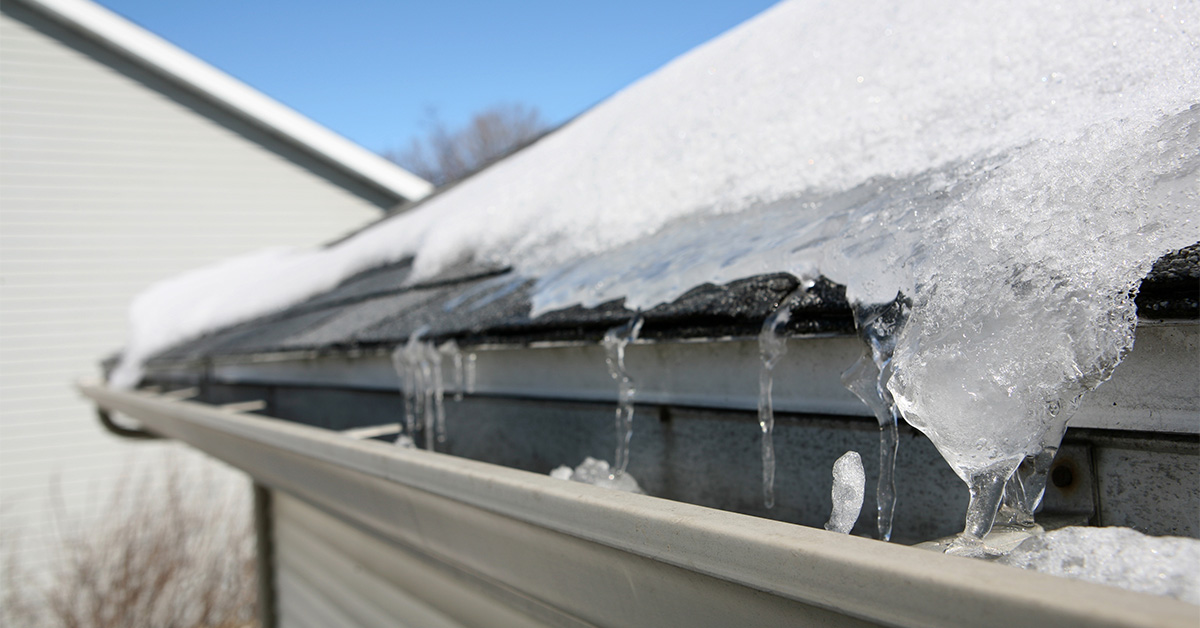
Taking these steps now can protect your home from winter damage. For complex repairs or inspections, consider hiring a professional roofing service like Pro-Tech Roofing in Tulsa.
6 Tips to Prevent Winter Roof Leaks
Tulsa’s Winter Weather Threats to Your Roof
Tulsa winters bring a mix of challenges for roofs, including storms, fluctuating temperatures, and varying precipitation. These conditions can take a toll on roofing materials and the overall structure.
Even a moderate amount of snow can put extra weight on your roof. When snow melts and refreezes, it adds even more strain, leading to sagging and placing stress on the roof decking and support beams.
The city’s rapid temperature changes cause roofing materials to expand and contract. Over time, this constant movement can create small cracks in shingles and loosen fasteners or seals around flashing, making your roof more vulnerable to leaks.
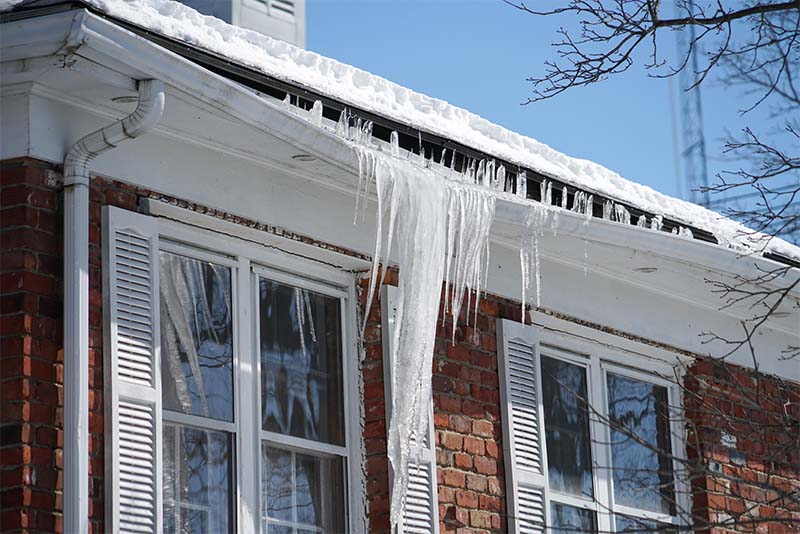
Ice dams are another common issue. They form when melting snow refreezes at the edge of the roof, trapping water that can seep beneath shingles and lead to interior damage. Freezing rain only worsens the problem, as ice buildup combined with strong winds can dislodge already weakened shingles.
Failing to prepare your roof for winter can lead to water damage, mold growth, and higher energy bills. Regular inspections and timely repairs are essential to keep these risks in check.
How to Inspect Your Roof for Winter Damage
As winter approaches in Tulsa, taking the time to inspect your roof can save you from costly repairs down the line. The good news? You don’t need to climb up there to get a basic idea of your roof’s condition – you can do a lot from the ground with just a few tools.
Start by using binoculars to scan your roof from various angles. Keep an eye out for cracked or missing shingles, as well as any problems where the slopes of your roof meet, known as roof valleys. These areas are especially prone to damage.
If you can access your attic safely, grab a flashlight and check for less obvious issues like water stains or signs of leaks. This step allows you to catch problems that might not be visible from the outside.
Check Shingles, Flashing, and Roof Valleys
Once you’ve done your initial inspection, focus on specific areas that tend to show wear and tear:
- Shingles: Look for cracks, curling, or missing pieces. Any of these could mean your roof needs attention before the colder weather sets in.
- Flashing: Inspect the metal flashing around chimneys, vents, and where the roof meets walls. Loose or damaged flashing can lead to leaks, especially during heavy rain or snow.
- Roof Valleys: These spots, where two slopes meet, are particularly vulnerable. Carefully check for any signs of damage, as issues here can lead to water pooling and leaks.
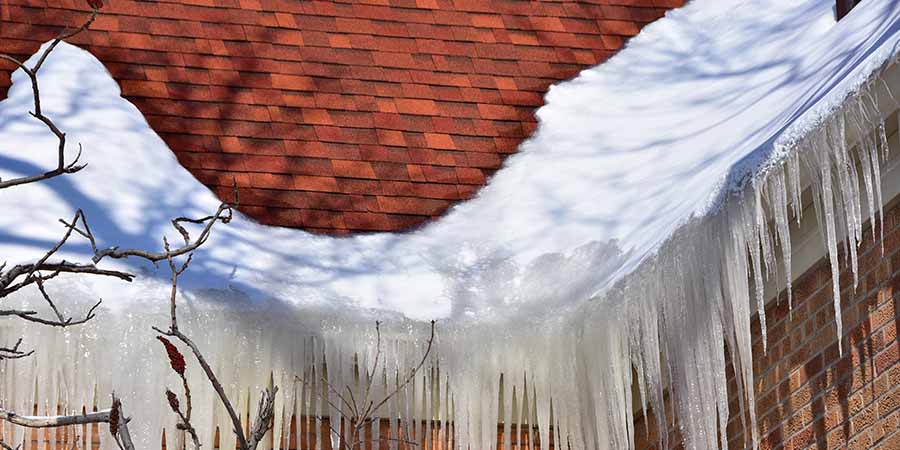
When to Call a Professional Roofer
While a basic visual inspection is something most homeowners can handle, there are times when it’s best to call in the pros. If your roof is steep, your home has multiple stories, or the design is complex, trying to inspect or repair it yourself can be risky. Also, if you notice significant damage – like widespread shingle issues or loose flashing – it’s safer and more effective to have a professional roofer assess the situation. They’ll not only inspect your roof thoroughly but also provide expert advice on the best solutions for your home.
Clean Your Roof and Gutters Before Winter
Keeping your roof and gutters clear is crucial for protecting your home from Tulsa’s harsh winter conditions. When debris builds up, it creates ideal conditions for ice dams and water backups, which can lead to expensive damage. Tackling this maintenance now can save you from costly repairs later. Here’s how to get your roof and gutters ready for the cold months ahead.
Leaves, twigs, and moss aren’t just unsightly – they trap moisture, speeding up roof wear and creating uneven surfaces where water can pool. Over time, this can lead to leaks and other issues.
Safe Ways to Remove Roof Debris
Choose a dry, calm day for roof cleaning. For multi-story homes, tools like a leaf blower with an extension or a telescoping roof rake can keep you safely on the ground.
If you need to go up on your roof, make sure conditions are dry (above 45°F), wear rubber-soled shoes for grip, and have someone spot you. Start at the top of the roof and work your way down, removing larger debris by hand. Avoid pressure washers or harsh tools that could damage shingles while cleaning.
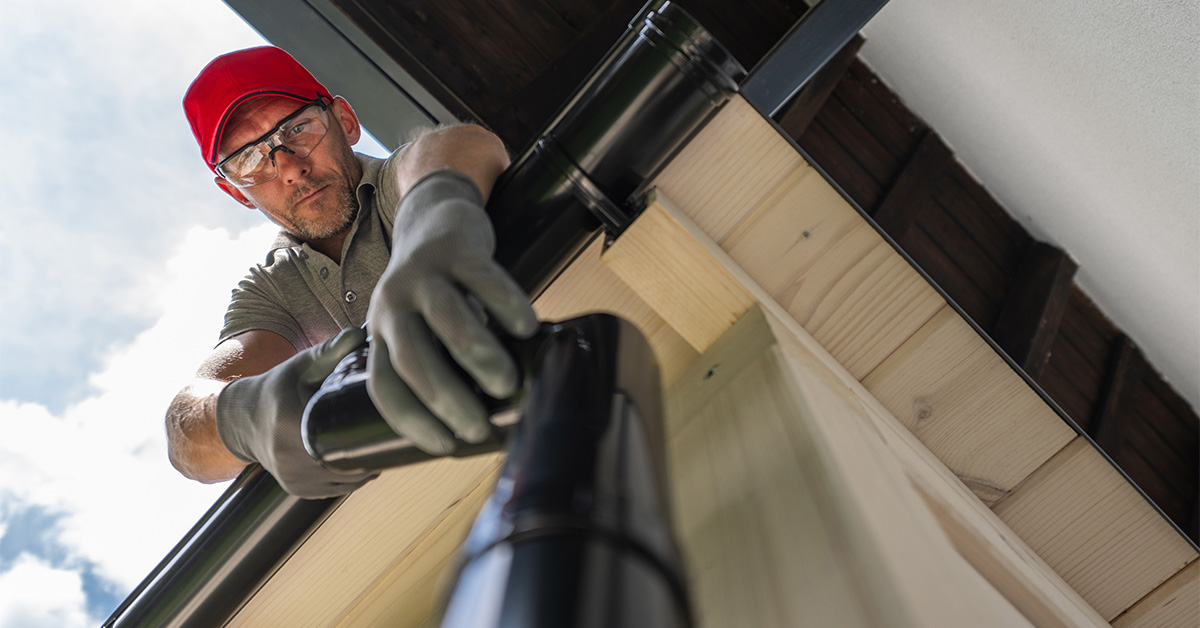
Pay close attention to areas around chimneys, vents, and satellite dishes – these spots often collect more debris due to wind disruption. Use a soft-bristled brush to gently remove stubborn debris without harming your shingles.
For moss, apply a zinc sulfate-based moss killer as directed. Let the moss die and dry out before brushing it away. Never scrape live moss, as this can damage your roof and encourage more growth in the long run.
Clean and Inspect Your Gutters
Once your roof is clear, focus on your gutters to ensure water can flow freely. Clogged gutters are a major cause of ice dams. When water gets trapped, it can back up under your shingles and freeze, forcing water into your home. Start by removing visible debris by hand, working in small sections.
A gutter scoop can make the job easier. These tools, available at most hardware stores, are shaped to fit gutters and efficiently remove both wet and dry debris. After clearing the bulk of the mess, flush your gutters with water to check for proper drainage and clear any remaining clogs.

Check the slope of your gutters during cleaning. Water should flow smoothly toward the downspouts without pooling. If water is standing still, your gutters may have sagged and need adjustment. Tighten or replace any loose brackets or hangers to restore the proper angle.
Run water through the downspouts to check for clogs. Slow drainage often signals a blockage. Use a plumber’s snake or a high-pressure nozzle to clear it. Ensure your downspouts direct water at least 6 feet away from your home’s foundation to avoid basement flooding and foundation issues.
If falling leaves are a constant problem, consider installing gutter guards to cut down on the frequency of cleanings.
As you clean, inspect your gutters for damage. Look for rust spots, holes, or joints that have separated. These issues can worsen with winter’s freeze-thaw cycles. Small holes can be patched with roofing cement, but more severe damage may need professional attention before the cold sets in.
sbb-itb-66ccccd
Seal and Repair Problem Areas
After cleaning your roof and gutters, the next step in preparing for winter is sealing any problem areas. These spots are especially vulnerable during Tulsa’s freeze-thaw cycles, where even small cracks can quickly turn into significant leaks. Addressing these issues now helps shield your home from potential water damage during the colder months.
Water tends to follow the path of least resistance, and areas where different materials meet are prone to shifting and separating over time. Focusing on these key penetration points is essential for a solid winter-proofing plan.
Seal Around Chimneys, Vents, and Skylights
Start by inspecting the area around your chimney, a common source of roof leaks. The flashing around chimneys often faces harsh weather, leading to small gaps. Check for separations where the metal flashing meets the chimney or roof surface. For larger gaps, consider using flashing tape paired with a bead of high-quality roofing cement or polyurethane caulk. This combination provides a durable seal that can handle temperature changes.
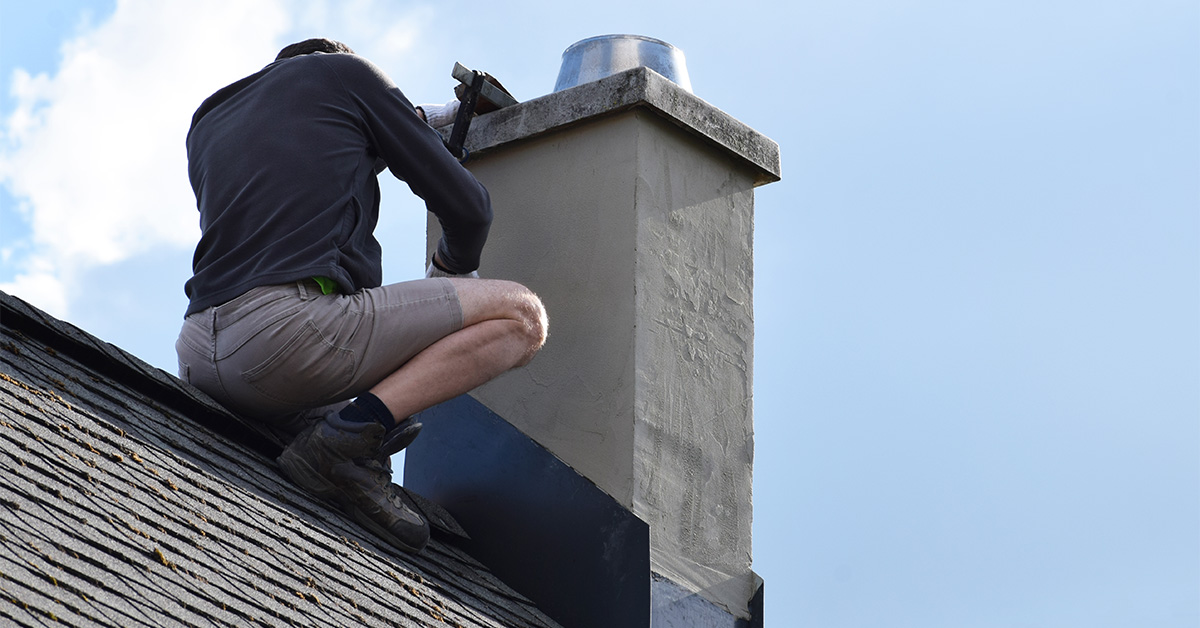
Next, turn your attention to plumbing vents and exhaust fans. The rubber boots that seal these areas can crack over time due to exposure to the sun. If you notice any signs of wear, replace the boots before winter to prevent water intrusion.
Skylight flashing also requires careful inspection, particularly on the uphill side where water naturally flows. Remove any cracked caulk and apply fresh sealant on a day when temperatures are above 50°F to ensure proper curing.
Don’t overlook satellite dishes and antenna mounts. These installations often use lag bolts that can loosen over time. Tighten any loose hardware and apply a small amount of roofing cement around the bolt heads to create a watertight seal.
Best Weatherproofing Products for Tulsa
Once gaps are sealed, selecting the right products for Tulsa’s climate is critical. Choose sealants that remain flexible despite the city’s temperature swings, which range from summer highs in the 90s°F to winter lows in the 20s°F.
Polyurethane-based sealants are a great choice for Oklahoma’s climate. They stay elastic in cold weather and resist UV damage, making them ideal for exterior roofing applications. Look for products that meet ASTM C920 standards to ensure durability.

For metal flashing repairs, butyl rubber sealants offer excellent adhesion and weather resistance. Roofing cement is another reliable option for larger repairs, especially modern acrylic-based formulations that cure quickly and provide added durability. These are also paintable, allowing you to match your roof color if needed.
Avoid using silicone caulks for roofing projects. Silicone doesn’t accept paint well and can complicate future repairs, which is why many roofing professionals advise against it.
For extra protection, consider applying a roof coating to vulnerable areas once repairs are complete. Elastomeric roof coatings form a seamless, flexible barrier that adapts to temperature changes and can extend the lifespan of your roof.
Before applying any sealant, make sure the area is thoroughly cleaned with a wire brush to remove loose debris. Proper surface preparation is essential for a successful seal. Ensure the area is completely dry before applying any product to avoid sealant failure.
Improve Insulation and Stop Ice Dams
Once you’ve sealed any problem areas, the next step is insulating your attic to keep the roof cold and prevent ice dams. Ice dams occur when heat escapes from your living spaces into the attic, warming parts of the roof and causing snow to melt unevenly. The melted water flows to the colder edges of the roof, refreezes, and forms a barrier. This can lead to water backing up under the shingles, causing damage.
From 2005 to 2009, water damage and freezing claims rose by 62%, with the average claim exceeding $3,000.
Add More Attic Insulation
Good insulation traps heat inside your home, helping to maintain a cold and consistent roof temperature. This reduces uneven snow melting and minimizes the risk of ice dams.
Start by inspecting your attic insulation for gaps, thin areas, or deterioration. Pay close attention to spots where the roof meets exterior walls, as these are often weak points. Experts generally recommend an R-value of at least R-30 for attic insulation, with R-38 being ideal in colder northern regions.
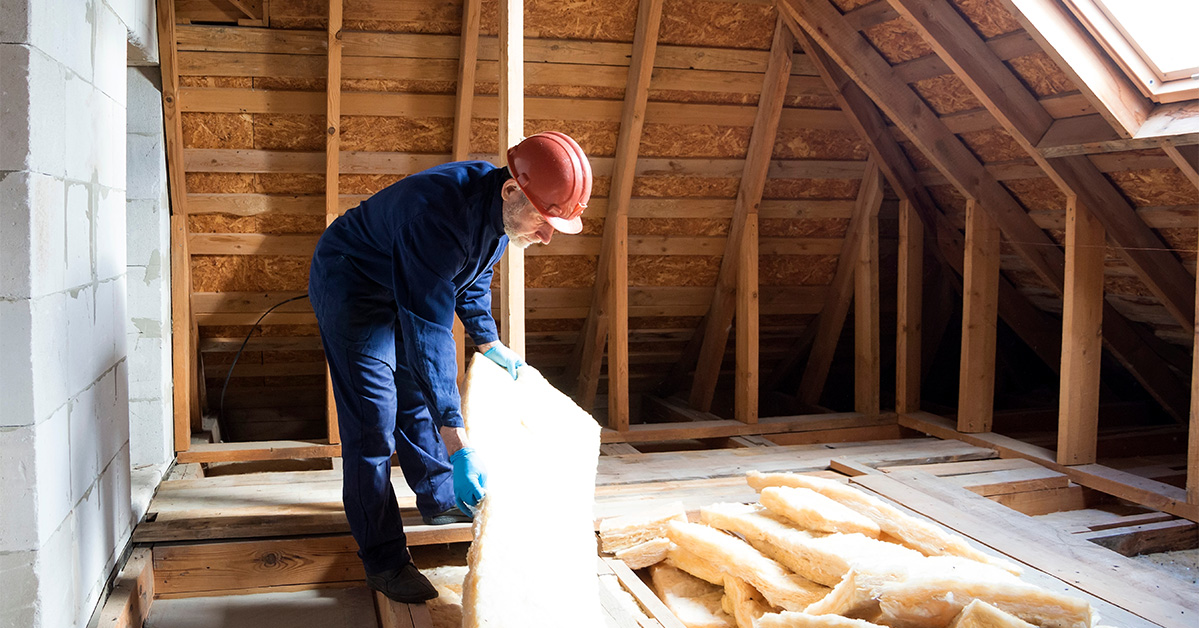
Before adding more insulation, focus on sealing air leaks. Use caulk or spray foam to close gaps around pipes, wiring, recessed lighting, attic hatches, and other openings. Even small gaps can lead to significant heat loss, undermining your insulation efforts.
When it comes to materials, fiberglass batts are a budget-friendly option for DIYers and work well with standard joist spacing. Blown-in cellulose is great for covering obstacles in older homes, while spray foam insulation provides the highest R-value per inch and forms an airtight seal – but it often requires professional installation.
For added protection, extend insulation 4 to 8 inches beyond exterior walls to cover the eaves, which are prone to ice dam formation. Don’t forget to insulate around roof penetrations, such as vent pipes, to prevent thermal bridges that can cause uneven roof temperatures.
Remember, insulation works best when paired with proper ventilation to maintain a uniform attic temperature.
Install Proper Roof Ventilation
Effective ventilation is just as important as insulation. It allows cold air to flow into the attic through soffit vents and exit through ridge vents, keeping the attic temperature consistent.
Ridge vents, installed along the roof peak, provide continuous, energy-free exhaust ventilation. When combined with soffit vents under the eaves, they create a natural airflow from the bottom of the roof to the top. A common guideline is one square foot of ventilation for every 150 square feet of attic space. If the attic is well-sealed, this ratio can be reduced.
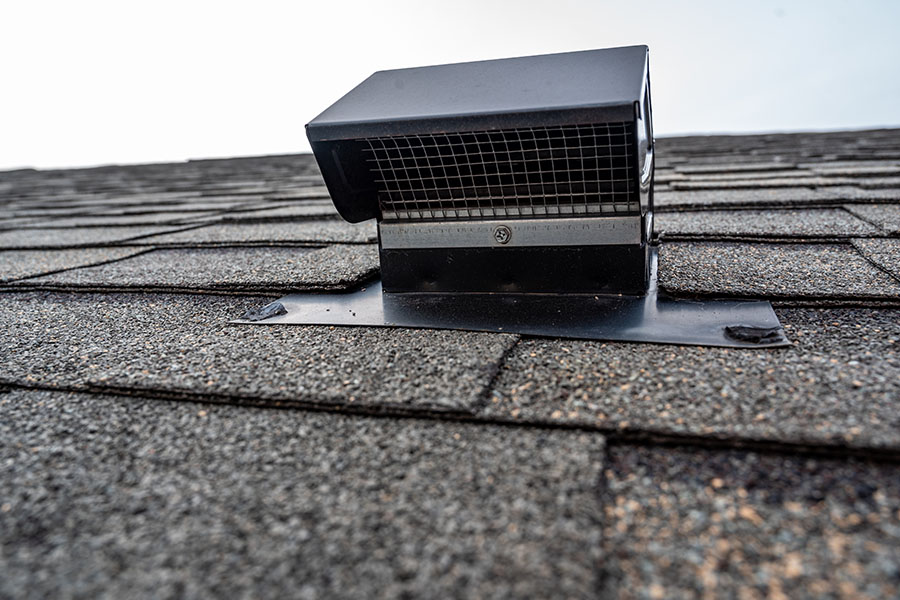
To ensure proper airflow, make sure insulation doesn’t block the soffit vents. Installing baffles between rafters can help keep ventilation channels open, even when insulation is added.
How to Safely Remove Snow from Your Roof
Even with good insulation and ventilation, heavy snow can strain your roof and contribute to ice dam formation. A telescoping roof rake is a safe tool to clear excess snow without climbing onto the roof.
Use a roof rake with a handle of at least 20 feet and a plastic or aluminum blade to clear the lower 4 to 6 feet of snow along the eaves. This area is the most vulnerable to ice dam formation. There’s no need to remove all the snow – just reducing the buildup at the edges can significantly lower the risk.

When using the rake, pull snow straight down to avoid damaging shingles. Never try to break up an ice dam with tools, as this can harm shingles and gutters. If ice dams have already formed, it’s best to call a professional roofing technician who can safely remove them with specialized equipment.
For your safety, avoid climbing onto the roof in winter. Snow and ice make surfaces slippery and dangerous, and the risk of injury isn’t worth it. Stick to ground-level methods or hire a professional for more complex tasks.
Get Professional Help from Pro-Tech Roofing
While you can tackle many winterization tasks on your own, relying on professional expertise ensures your roof is fully prepared for winter. Since 2003, Pro-Tech Roofing has been a trusted name in Tulsa, offering top-notch winter preparation services. Their team handles everything from free inspections to specialized repairs, ensuring your roof is ready to withstand harsh conditions.
A free inspection can uncover hidden issues before they escalate. Pro-Tech Roofing’s certified experts are trained to identify problems like damaged flashing around chimneys, subtle wear on shingles, or ventilation issues that could lead to ice dams – problems that might go unnoticed without a professional eye.
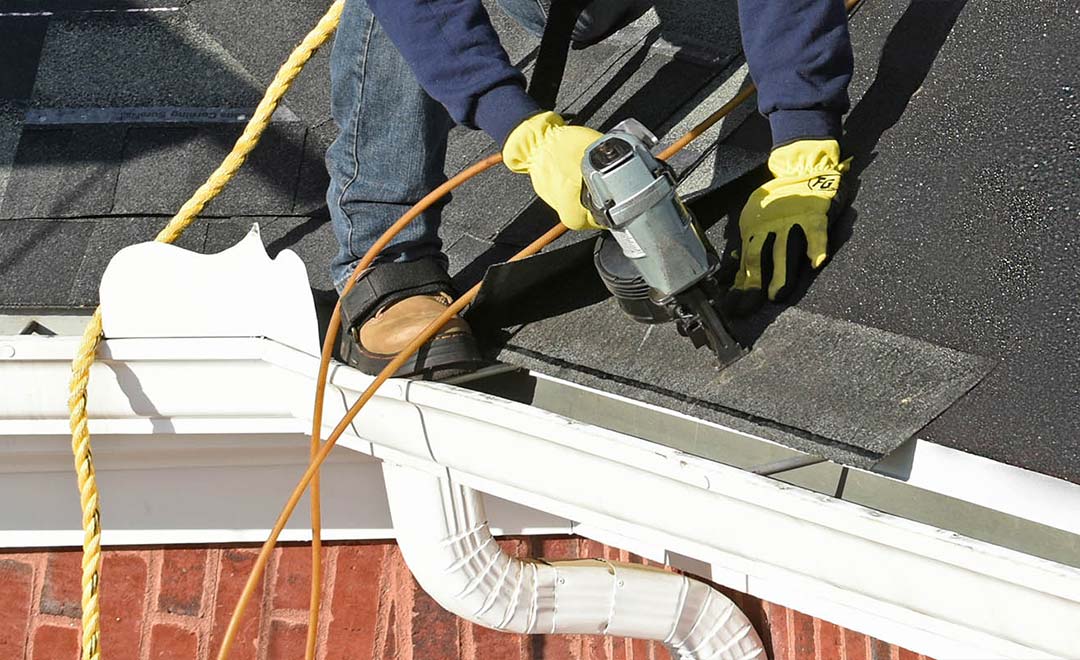
Their commitment to quality is evident in the comprehensive services they provide, tailored specifically for Tulsa’s climate. These include professional gutter cleaning and repair, attic insulation assessments, and ventilation upgrades. As a certified contractor for both GAF and Owens Corning, Pro-Tech Roofing uses high-quality materials and proven techniques to deliver long-lasting protection.
Customer experiences speak volumes about their service. David Nasr shared:
"I highly recommend these guys for roofing in Tulsa. It is incredible the difference it makes in terms of temperature inside the house when the ridge vent is added, my previous roofer did not add appropriate ventilation which caused my roof to get damaged and need replacement prematurely."
Pro-Tech Roofing also offers support with insurance claims. If winter weather damages your roof, their team simplifies the process by providing necessary documentation and working directly with your insurance company to ensure a smoother experience.
With an A+ rating from the Better Business Bureau and state licenses (Residential #80000220, Commercial #80003685), Pro-Tech Roofing guarantees qualified service. They proudly serve Tulsa and the surrounding Northeast Oklahoma area, including Broken Arrow, Jenks, and Owasso.
Don’t wait for winter to create costly problems. Schedule your free inspection today and take the first step toward safeguarding your home.
FAQs
How can I tell if my roof is at risk for winter weather damage without climbing on it?
To identify potential winter hazards for your roof without risking a climb, start by observing for missing, curling, or damaged shingles – these can make your roof vulnerable to snow and ice. Keep an eye out for water stains on ceilings or walls, which might signal leaks from compromised flashing or sealants. From the ground, take note of sagging or uneven rooflines, as well as granules accumulating in gutters or downspouts, which are signs of shingle deterioration. Regularly checking these details from ground level can help you address problems early and save on expensive winter repairs.
What’s the safest way to remove snow from my roof without damaging it or risking injury?
To remove snow from your roof safely, use a roof rake with an extendable handle. This allows you to clear snow while staying securely on the ground. Begin at the roof’s edge and gradually work your way upward, making sure to leave about 2–3 inches of snow behind to protect your shingles from damage. Steer clear of sharp tools or chemicals, as they can harm the roof’s surface.
Tackle the job in small sections to stay in control, and always keep an eye on the weather to ensure safe conditions. If the snow is too heavy or tough to clear, it’s a good idea to call in a professional for help.
Why should I improve attic insulation and ventilation before winter, and how does it help prevent ice dams?
Improving attic insulation and ventilation before winter hits can make a big difference in preventing ice dams, which can seriously damage your roof. Ice dams happen when warm air escapes from your home into the attic, heating up the roof and causing snow to melt. That melted snow then refreezes along the roof’s edges, creating blockages that trap water and lead to leaks.
Adding proper insulation helps stop heat from escaping your home, keeping your roof cold and reducing uneven snowmelt. At the same time, good ventilation brings in cold outdoor air, keeping the attic temperature consistent and avoiding warm spots. Together, these upgrades not only protect your roof but also lower your energy bills and help you steer clear of expensive winter repairs.
